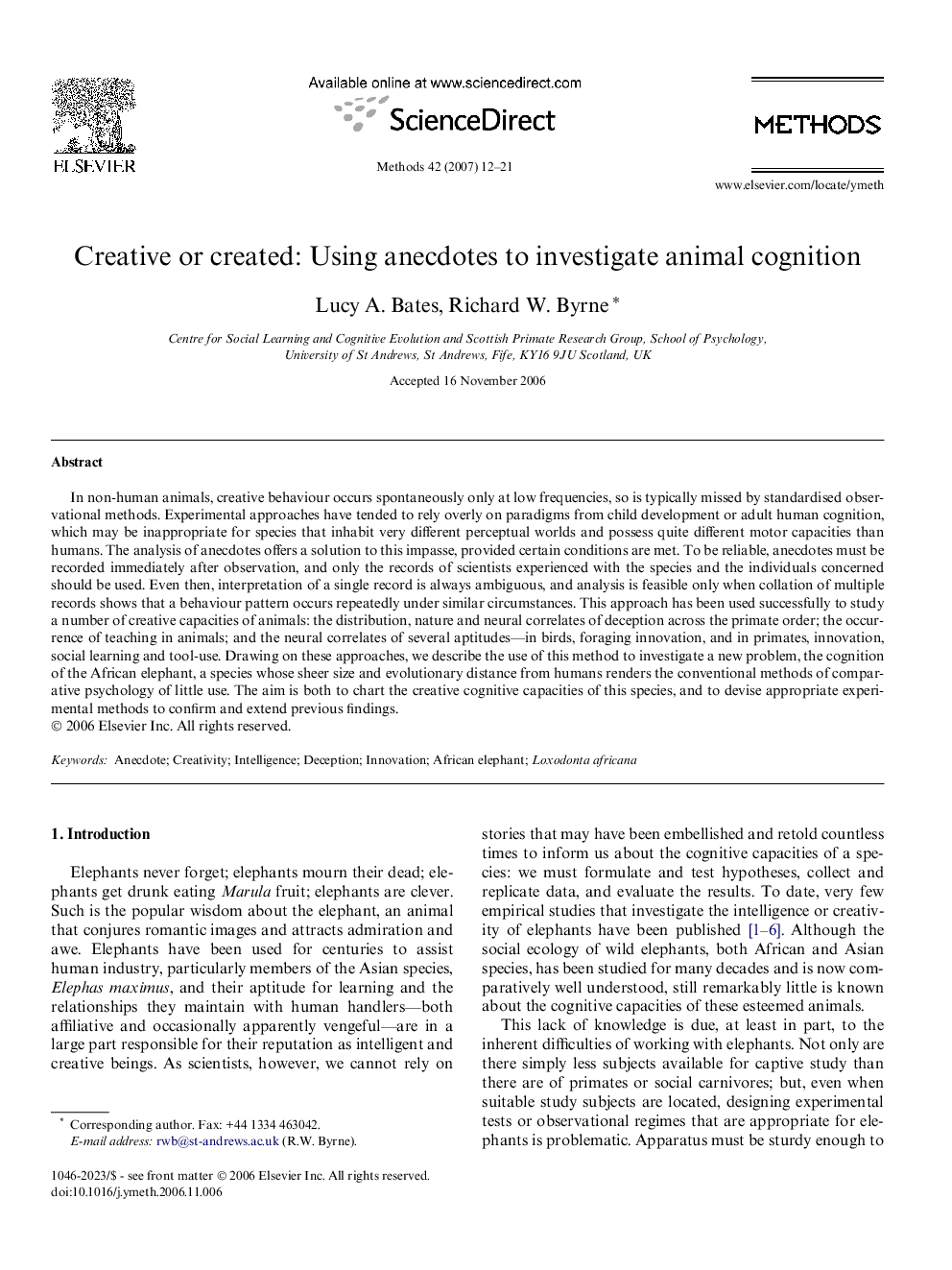| Article ID | Journal | Published Year | Pages | File Type |
|---|---|---|---|---|
| 1993905 | Methods | 2007 | 10 Pages |
In non-human animals, creative behaviour occurs spontaneously only at low frequencies, so is typically missed by standardised observational methods. Experimental approaches have tended to rely overly on paradigms from child development or adult human cognition, which may be inappropriate for species that inhabit very different perceptual worlds and possess quite different motor capacities than humans. The analysis of anecdotes offers a solution to this impasse, provided certain conditions are met. To be reliable, anecdotes must be recorded immediately after observation, and only the records of scientists experienced with the species and the individuals concerned should be used. Even then, interpretation of a single record is always ambiguous, and analysis is feasible only when collation of multiple records shows that a behaviour pattern occurs repeatedly under similar circumstances. This approach has been used successfully to study a number of creative capacities of animals: the distribution, nature and neural correlates of deception across the primate order; the occurrence of teaching in animals; and the neural correlates of several aptitudes—in birds, foraging innovation, and in primates, innovation, social learning and tool-use. Drawing on these approaches, we describe the use of this method to investigate a new problem, the cognition of the African elephant, a species whose sheer size and evolutionary distance from humans renders the conventional methods of comparative psychology of little use. The aim is both to chart the creative cognitive capacities of this species, and to devise appropriate experimental methods to confirm and extend previous findings.
